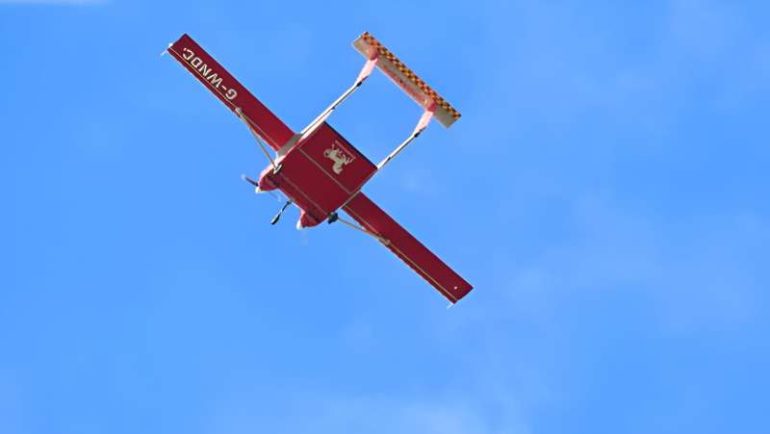- A swarm of AI-driven drones has been developed for early wildfire detection and response.
- The drones utilize thermal and optical imaging for autonomous fire assessment and reporting.
- Developed by the University of Sheffield, with swarm coordination technology from the University of Bristol.
- Tested by Lancashire Fire and Rescue Service in collaboration with Windracers.
- The technology enhances early intervention capabilities and reduces wildfire risks.
- Wildfires in the UK are becoming more frequent and severe due to climate change and other factors.
Main AI News:
A pioneering development in wildfire management has introduced a swarm of self-coordinating drones aimed at early intervention. Utilizing AI-driven thermal and optical imaging, these drones autonomously detect, assess, and report fire conditions, providing critical information to firefighting teams.
Developed by the University of Sheffield’s School of Electrical and Electronic Engineering, the AI system uses advanced computer vision techniques to operate effectively across various weather conditions. Paired with the University of Bristol swarm technology, these drones can quickly deploy fire retardants, monitor the situation, and return to base autonomously.
Lancashire Fire and Rescue Service, known for battling a significant wildfire in 2018, has tested this innovative drone swarm. The project is a collaboration with Windracers, a British developer of autonomous cargo aircraft, and leading AI and robotics experts from the Universities of Bristol and Sheffield. Together, they have developed a unique system for detecting and suppressing fires before they escalate.
The Windracer ULTRA aircraft used in the project can carry 100 kg of fire retardant and autonomously cover vast areas, potentially as large as Greece, during high-risk periods. As wildfires become more frequent and severe in the UK, driven by climate change and other factors, this technology significantly advances early wildfire mitigation strategies.
Conclusion:
The development of AI-driven drone swarms for wildfire mitigation represents a significant shift in the market for firefighting technology. As wildfires become more prevalent and severe, the demand for advanced, autonomous solutions will likely increase. This innovation enhances the efficiency of firefighting efforts and reduces risks to human life and property. Companies involved in AI, robotics, and drone technology are well-positioned to capture a growing market share as governments and organizations seek out effective tools for disaster management. This technology could lead to new partnerships, investment opportunities, and a redefinition of best practices in emergency response.

